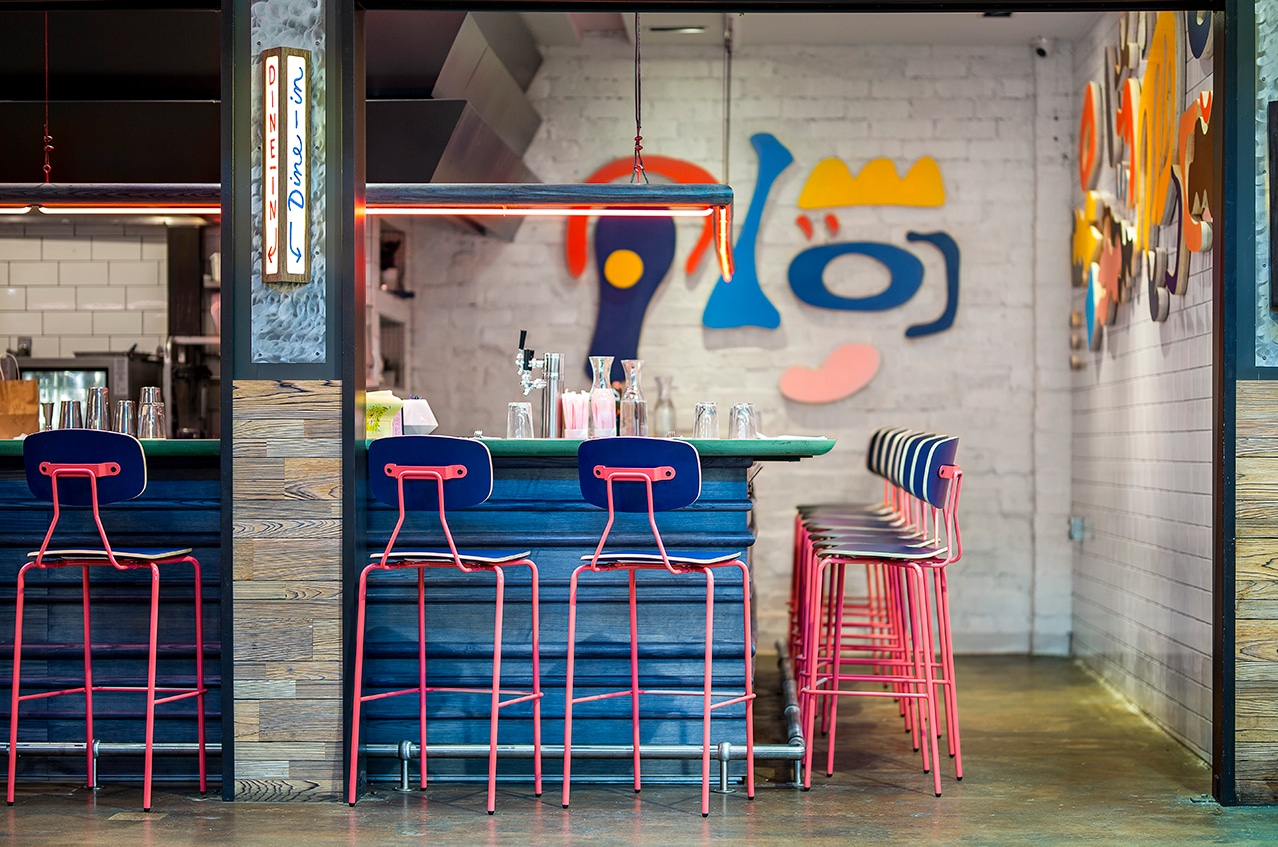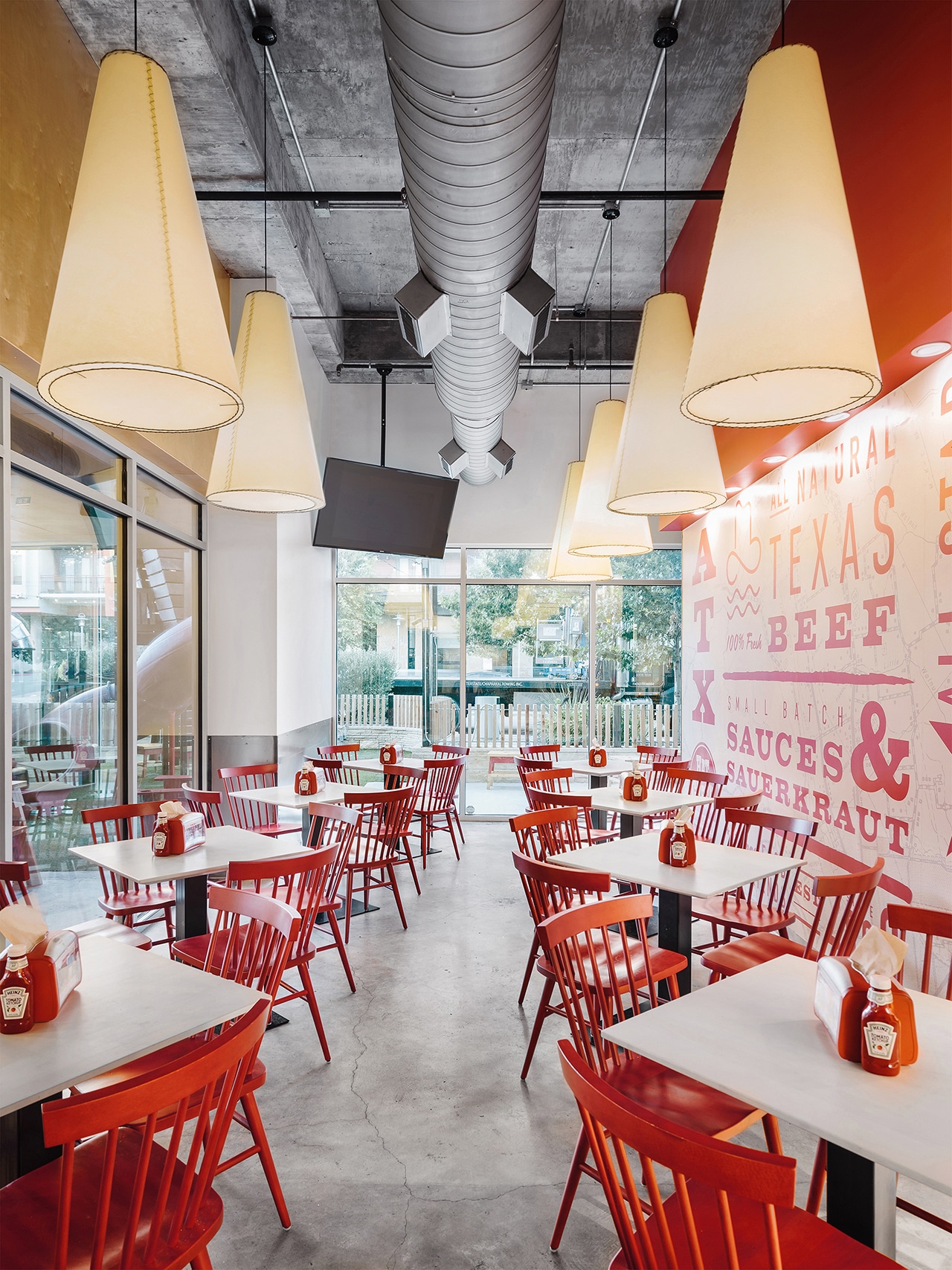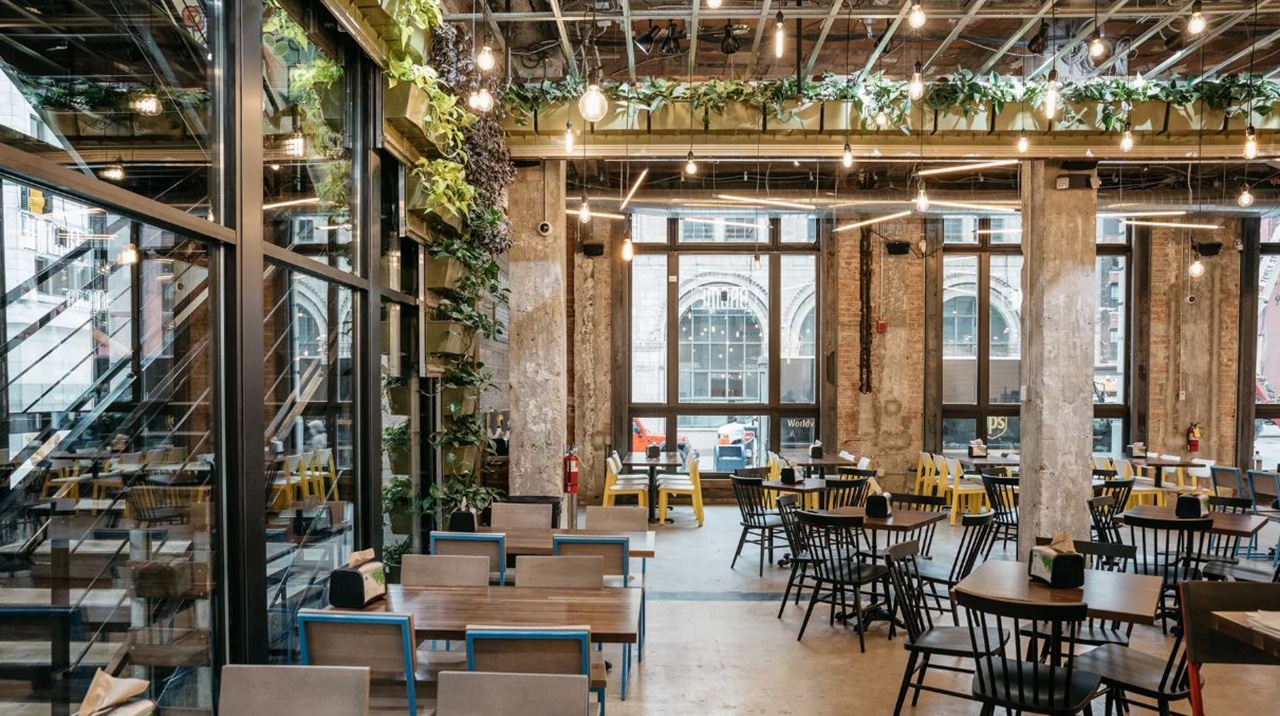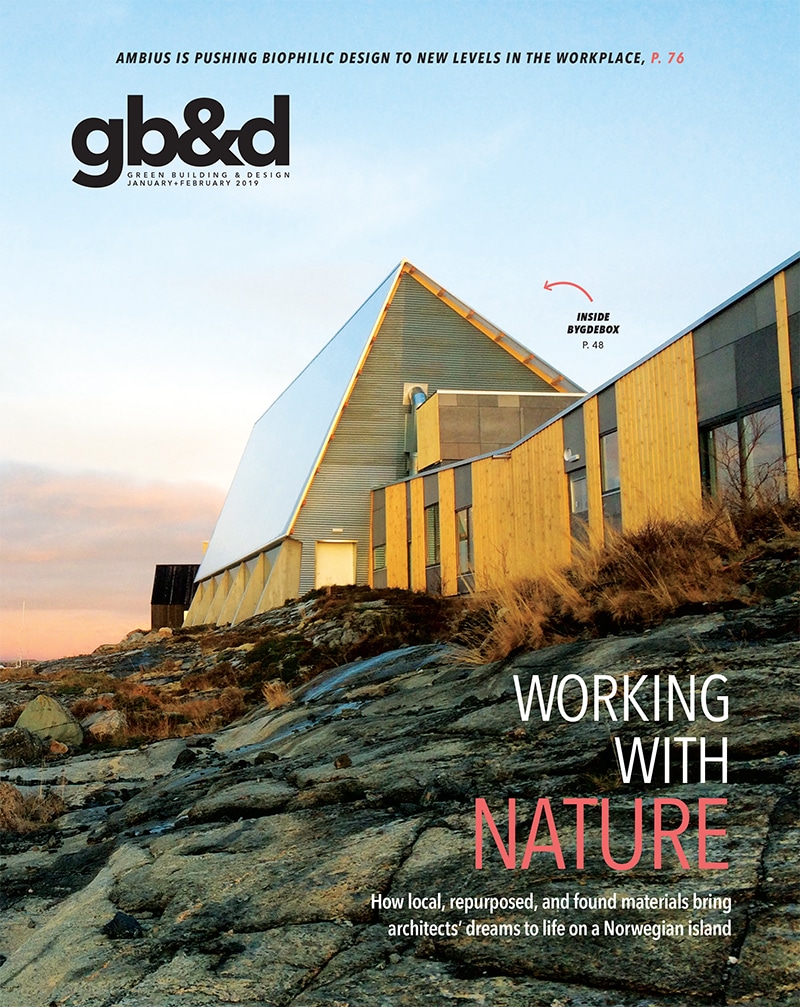
Chairs like these helped to transform restaurants like Brome Modern Eatery and Hat Creek Burger Company. [Photo: Courtesy of Grand Rapids Chair Company]
Grand Rapids Chair Company provides restaurants with trendsetting design.
Take a seat in nearly any chain restaurant today and you’ll probably notice something has shifted. From pleather and plastic to warm woods and clean metals, quick-service eating spaces have evolved, with Wi-Fi and comfortable lounge areas flexible enough to host a working lunch and intimate enough for a solo meal. Michigan-based Grand Rapids Chair Company has its finger on the pulse of this aesthetic with its collections of design-forward, durable, high-quality commercial furniture, outfitting everything from Chipotle to Sweetgreen.
Launched over two decades ago in Grand Rapids, the company’s ethos “has always been about elevating brands and helping them create a one-of-a-kind experience within commercial spaces,” says Dean Jeffrey, director of marketing and new product development at Grand Rapids Chair Company. We asked Jeffrey to talk about how something as simple as a chair (and yes, they make much more than just chairs) can help transform both a space and an industry.

[Photo: Courtesy of Grand Rapids Chair Company]
How would you describe the changes in the quick-service food industry?
The spaces we create for are traditionally in-and-out spaces—until recently. Millennials have really driven the aesthetic change. The new trends are to create places to relax in, meet in, and work in—all with a harmonious design. We’ve found that furniture should be more than just a layer of comfort; it should help to elevate the space and the brand.
How do you marry great design with the practical needs of the commercial industry?
We create furniture with a modern aesthetic that still feels approachable. At the same time, functionality, durability, and “cleanability” are crucial. That’s why our mixed materials collections, often incorporating steel and wood, have become super popular. Steel is easy to work with. It can be molded into any shape, but it can also survive intense usage—stacking, moving, cleaning with harsh chemicals. You can celebrate the rawness of it with a low gloss, or you can put color on it. Wood gives you a chance to break up the industrial vibe. It softens the look and makes it approachable with curves and textures. You have the ability to paint or color it endlessly. You can distress it, add cutouts, make it your own. We differentiate our design through personalization, leaving plenty of room for both designers and brands to put their own stamp on things—from color to fabric to materials.

[Photo: Courtesy of Grand Rapids Chair Company]
How does a piece of your furniture go from concept to factory floor?
Most development projects take 10 to 12 months from concept to shipment. We start with the space we are originally intending the piece for. Who will be sitting there? What will they be doing? Then we tag our amazing network of designers, like Dowel Jones of Australia and Midwest-based designer Joey Ruiter and choose one who’s really pushing in the right direction. We then have two or three months of refining before it goes to our manufacturing team. We wouldn’t be here if we didn’t have over 100 amazing people in our factory. Some have been here 20 years. Others we’ve trained from the bottom up, working with local technical colleges.
You focus on using high-quality, local, American-made materials. Why is that so important?
We’ve always been passionate about not only creating products in America to better the communities around us, but also using high-quality local materials. Being in the heart of American furniture manufacturing in Grand Rapids, we have amazing local vendors we can tap both for their knowledge and for materials. The materials we choose are also a point of pride, like our white oak, which comes from sustainably harvested forests.
How are you able to set those standards and yet create affordable collections that can stand the test of time?
We make our products affordable because we know how to make them quickly and efficiently. That keeps costs low and consistency high. Our products also go through between nine and 15 tests to make sure they live up to a standard that is unique in the industry. Our chairs really will last for 10 years. At the same time, we are always asking ourselves, in the next 10 to 15 years, how will the restaurant industry continue to change? How will people interact with these spaces in the future?

